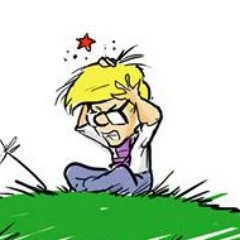well, yes, none of the dnd setting people think like medieval people at all.
but i take exception to this idiocy:
fundamentally incompatible with the European fantasy typified by Lord of the Rings, in which no fellowship can alter the fact that Sam is by birth a servant, Frodo a gentleman, Strider a king, and Gandalf a wizard.
has this person read the lord of the rings? sam becomes a land-owning gentleman at the end of the novel. he actually makes it out of his class.
to be fair, he’s the only one in the entire god damned book. there arent even many speaking roles for named commoners in there. sam, the gaffer, ted sandyman, farmer maggot, butterbur, gamling, ioreth. that’s about it. the vast majority of these are in the shire portions of the book.
Interesting take. I look at it as less “anti-medieval” and more anti-government. Gygax was a libertarian and it grew out of wargaming. Gygax just wanted a world where he could fight dragons and didn’t bother to do the world building of an economic or political system. I think this was more out of disinterest in the topics rather than as a political stance.
IMO, the big American bias in heroic fantasy RPG including D&D is how empty (most) settings are. If you travel (nowadays by car) in rural Europe, you’d find village every 5-10km, turns out that people walking to their field don’t like to spend more than 1h commuting. While on some high fantasy map, you have like 3 day of walk through a dangerous forest, or an endless plain without much settlements.
Also it’s worth mentioning that many European major roads/highway have been built at first by the Roman, and have been modernized through history. So again, middle age wasn’t as empty, salvage as many D&D settings. Which indeed looks more like frontier era US.
The Sword Coast setting is essentially a post-collapse setting where monsters are an existential threat (in theory). There are no longer villages every 5k because only the best and safest lands are worth farming.
In theory. Though I guess you could argue the Sword Coast is also kind of a metaphor for American colonization? The barbarian tribes certainly have Native American coding going on at times.
I dont think that’s American, it’s a shit-ton of custom work to fill all that in. Are Europeans willing to spend 10 times as long worldbuilding their campaigns??
And America wasn’t actually empty frontier, either. It was full of the native people that had been living there since time imemorial, and the ex-europeans slaughtered and plagued their way through.
@sirblastalot @Ziggurat And it’s pretty clear that orcs and goblins and such started out as the stand-ins for those Natives.
Orcs in Tolkien’s work were rather a stand in for German soldiers since he fought them in WW1. Gygax simply sourced monsters from everywhere. Only later they became elevated to sentient beings and a playable race… uh… species now (D&D 2024).
Considering ~95% of the native population died of disease within 50 years of the settlers landing? Yeah you can say it was pretty empty. I’m always fascinated by the willful ignorance of “settlers” in the context of the old west. Journals talk of “miraculous” groves of fruiting bushes and trees or other edible vegetation and how it’s clearly a gift from their white god while studiously avoiding any mention of the signs of previous habitation in the area. We’re still discovering massive irrigation networks in AZ and NM with satellite LiDAR that no “settler” ever mentioned.
Don’t overlook the first genocide of my people by focusing too hard on the second. The Europeans struggled to quell the survivors. I honestly don’t think settlers had much of a chance otherwise, even with the difference in technology.
I didn’t overlook it, I specifically used the term “plagued” in reference to that.
Except there’s about ~200 years between plagues being introduced to the America’s and the big westward settling pushes. Again, don’t conflate one genocide with another.



